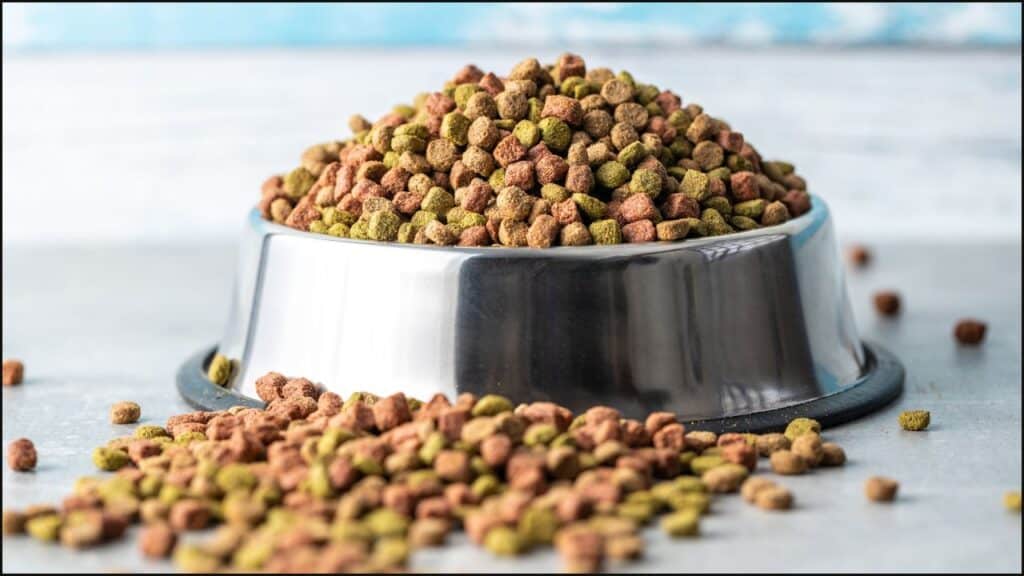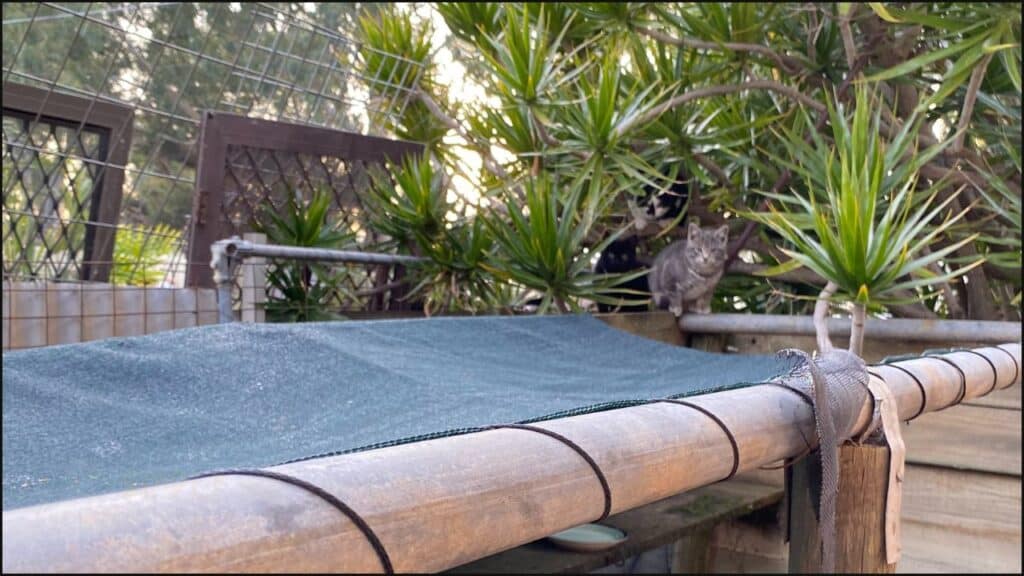Feed your cat 2-4 times per day.
This strategy makes sense for almost all people, regardless of work. Avoid free-feeding.
Still unsure?
You don’t want to overfeed cats, to avoid weight gain and increase in diabetes risk. It’s also money wasted.
In the rest of this article I’ll go through best practices on how often to feed a cat for specific situations. Then I’ll answer frequently asked questions.
Let’s get into the article.
I am not a veterinarian and I recommend seeking the advice of a vet for any further questions. This article is not intended as a replacement for medical advice.
How Often Should I Feed My Cat?
2-4 times a day.
Cats eat 7-20 meals in the wild from small prey like rodents. However this is probably due to the paltry calorie content of prey.
There’s no consensus on what works best.
Once daily feeding could also work. A 2020 study showed no averse affects from once daily feeding over 3 weeks in cats.
Another 2014 study revealed 4 meals per day increases physical activity in cats. It’s not clear if this helps improve weight loss long term.
Quick notes:
- Feed your cat 2-4 times a day
- No consensus guidelines
- Short term study shows no ill effect of once daily feeding
Portion Sizes or Free-Feeding?
Portions are best.
Free-feeding is not recommended, as it correlates to an increased risk of obesity. It makes it harder to track and control a cats intake.
Too much dry cat food is problematic as it’s four times more caloric dense than wet food. Research suggests it increases risk of obesity by up to 79%.
Quick notes:
- Portion cat food
- Easier to track and control calories
- Free-feeding dry food increases obesity risk
Read more:

Working With Your Schedule
Use what’s best.
For most busy people, two meals works fine (once in the morning and one when you get home).
Cats lack a circadian rhythm and hunt throughout the night. Use that to your advantage to provide meals at ‘less sociable’ times.
Quick notes:
- Work with your schedule
- Two meals is fine for busy people
- Try ‘less sociable’ hours if daytime doesn’t permit
Scheduled or Random Feeding?
Cat you feed cats willy nilly?
From my experience feeding feral cats in the past, they get used to consistent feeding times. Research shows cats can adapt to feeding schedules.
Cats may be conditioned to eat at certain times based on external cues like people (e.g. dawn, coming home after a day of work).
Quick notes:
- Consistent times probably best
- Cats may get conditioned
- Connect meals to cues

How Often Should I Feed Your Cat at Different Life Stages?
Kittens (0-12 Months)
Feed kittens 3-4 a day.
Like adult cats, there are no consensus guidelines. However kittens have higher calorie needs per pound of body weight.
Therefore the priority is growth and development. Consider tapering off meal frequency as kittens reach adulthood.
Here’s a kitten feeding chart below:
How to use:
- Check cats weight
- Check age (e.g. 4 – 6.5 months)
- Calculate calories based on energy need (e.g. a 2.5kg and 5 month old kitten needs 130 x 2.5 = 325 kcal/day)
- Divide by number of meals (or use chart – e.g. 43 x 2.5 = 107 kcal per meal)
| Age | Energy need (kg) | Energy needs (lbs) | Per meal (3 x day) |
|---|---|---|---|
| 6 – 20 weeks | 250 kcal/kg | 113 kcal/lbs | 83 kcal/kg or 37 kcal/lbs |
| 4 – 6.5 months | 130 kcal/kg | 59 kcal/lbs | 43 kcal/kg or 27 kcal/lbs |
| 7 – 8.5 months | 100 kcal/kg | 45 kcal/lbs | 33 kcal/kg or 20 kcal/lbs |
| 9 -11 months | 80 kcal/kg | 36 kcal/lbs | 27 kcal/kg or 12 kcal/lbs |
| 12 months | 60 kcal/kg | 27 kcal/lbs | 20 kcal/kg or 9 kcal/lbs |
Adults (1-7 years)
Use 2-4 meals.
Feeding up to 4 times a day increases physical activity, although the benefit is small. Avoid free-feeding (also called ad-libitum eating).
Indoor cats are at risk of overeating, especially if the environment isn’t stimulating.
Mature (7-10 years)
Consider fewer meals or calories.
Mature cats tend to have lower calorie needs that adults. This is a cats ‘middle age’ period.
Cats may gain weight due to a reduction in physical activity. Use a body condition score (BCS) chart and adjust calories/meals if your cat is getting too heavy.
Seniors (10+ years)
3-4 meals is best.
After 12 years, cats tend to lose weight to muscle loss. This is due a range of age factors including sarcopenia and reduced digestion of protein.
Small frequent meals are a good way to help senior cats maintain weight.
Learn More:
How Often to Feed an Indoor Cat?
Feed indoor cats 2-4 times a day.
The majority of cats are indoor cats. Cats evolved as predators and retain their natural desire to roam, even if indoors.
However most indoor environments don’t offer opportunity for physical activity. Indoor cats need fewer calories than outdoor cats.
Research finds more meals increases physical activity. This might benefit indoor cats, although it’s not clear how beneficial the effect is on weight.
Quick notes:
- Feed indoor cats 2-4 times a day
- Get less physical activity
- Need fewer calories
What if My Cat Is Still Hungry?
Are they getting enough?
Use a calorie calculator and make sure you are serving enough each meal. Cat foods offer feeding guidelines on the pack too.
In my experience, free-feeding and random feeding are a problem, Cats may learn to associate feeding with times they are usually fed (i.e. use a schedule).
Quick notes:
- Is your cat getting enough?
- Use a calorie calculator
- Random feeding = random hunger
Resources:
Frequently Asked Questions
Can I Feed My Cat Every 3 Hours?
Yes.
Cats eat 7-10 meals a day in the wild, albeit from small prey (not high in calories). Calculate what your cat needs and divvy up.
Can I Overfeed My Cat?
Yes.
If you feed your cat too much, like people, they gain weight. Excess weight increases the risk of diabetes.
Free-feeding and giving cats too many treats is easy to over do and hard to track.
Do Cats Need 2 or 3 Meals a Day?
Either is fine.
The main thing is that you can stay consistent with feeding times. You want to condition your cat to know when food is coming.
Most people will be able to stick to two meals, so I’d go with that.
Should Cats Have Food Available at All Times?
No.
Free-feeding increases the risk of obesity. It’s hard to know how much your cat will eat.
It’s also easy. Hunting and catching prey costs energy – eating out a bowl isn’t a challenge.
What Is the Best Time to Feed Cats?
Mornings.
In my experience cats are able to easily associate dawn with a meal. Mornings are usually the easiest to work with for most people.
How Often Should I Feed My Cats Treats?
There’s no guideline.
Limit to no more than 10% of the diet. One way to do that is to weigh up a daily allotment and stick to that.
Another option is to put that daily allotment into a puzzle feeder. This can help increase physical activity.
How Often Should You Feed a Kitten?
3-4 times a day.
Kittens have higher energy needs than adult cats per pound. More meals = more chances to get food in.
How Do I Know if I’m Feeding My Cat Enough?
Use a body condition score chart.
Aim for a score of 5. If your cat is under 5 then they need more food and vice versa.
Conclusion
2-4 meals a day is best for most cats.
Make sure you measure out food to meet their calorie needs. Use the instructions on the label or an online calculator.
Aim for a 5 on the body condition score chart. Adjust calories down if body condition score is higher than 5 and vice versa.
See a vet for specific advice for medical conditions.
Read more:
